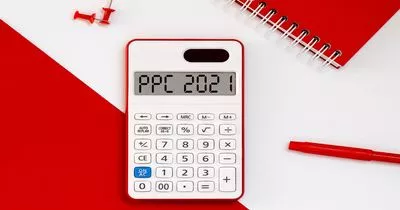Setting a reasonable PPC budget is essential to maximizing your return on investment. Although PPC has a reputation for delivering "instant" results, this does not necessarily imply that you'll be making money right immediately. It may take a while for some people before the investment pays for itself.
A PPC budget calculator will help you figure out just how much you need to spend to achieve your business objectives. Take a closer look at how to calculate your PPC budget and learn some helpful hints along the way.
How Much Should You Spend on PPC Ads?
PPC budget planning is essential for remaining on track with your strategy, establishing benchmarks, and making long-term plans. That being said, there isn't and shouldn't be a set amount for how much you should spend on paid advertising. Depending on your business and the amount of competition, it's a smart idea to increase or decrease the percentage of your budget allocated to Display.
Advertising on the Display Network can have a greater average conversion rate than traditional search, so if you're in a high-converting industry like travel or car, you might want to increase your display budget.
There are several critical aspects to consider when setting your budget, including your website's conversion rate, how much it costs to rank for your industry's keywords, and how much your customers are worth over time. In budgeting, lead requirements are the most significant concern. Determine the qualities of your leads, such as their age, gender, and location.
- Quality control
- CPL target price
- Frequency of visitors
- Geographic location
Your PPC budget can be determined by following these four steps:
The best way to prevent wasting all of your money on a marketing campaign that doesn't succeed is to avoid going into it blind. You may use a four-step methodology to help you estimate the proper PPC spending for your firm.
Step 1: Determine which keywords are most relevant to your marketing goals
Identifying the search terms that potential buyers use while searching for your product or service will help you estimate a suitable PPC budget for a Search campaign. For businesses like e-commerce stores, this can be simple, but if your product answers a specific need, things can get a little more complicated. Determine the best way to track the value of your marketing dollars in these situations.
The first thing you should do is focus on keywords that are highly likely to be purchased shortly. Conversion and click-through rates can be improved by using high-intent keywords.
Step 2: Run a report from the Keyword Planner tool.
The Google Keyword Planner is a valuable tool for narrowing down your target market and determining your marketing budget. You may use it to find new keywords, merge keyword lists, receive click and cost performance projections, and see search traffic data and trends, amongst other things. A list or report will appear for each option, and you can sort the data in numerous ways, such as by the average monthly number of searches, the share of ad impressions, and the CPC that other advertisers are paying for keywords with the same configuration as yours.
SEO and PPC management tools like Ahrefs and Semrush are excellent options for a one-stop shop. Their keyword tools provide dependable keyword data, insights, and detailed filtering, all of which are completely free. They're a great source of information. It is essential to remember that those statistics are not set in stone whatever method you choose. Because they're just estimates, you can figure out the worst and best-case scenarios by dividing/multiplying them (e.g.
Step 3: Calculate the Expenses
Many PPC specialists utilize a sequence formula to determine an appropriate advertising budget. The average monthly searches of all relevant terms should be multiplied by a targeted search impression share, and the average monthly searches of all relevant terms should be multiplied by a targeted search impression share, and so on (often 50 percent or 70 percent ). With this information, you'll be able to estimate the overall number of impressions that your ads could receive across all of the keywords included in the study, which will help you plan your advertising budget.
The following stage determines the possible volume of clicks once the number of impressions has been selected. The images are multiplied by an expected CTR here (click-through rate).
Look out for your industry's CTR benchmarks for additional help if you're struggling to figure out your own CTR numbers. Now that you know how many clicks you can expect, it's time to figure out how much money you can spend on PPC advertising. This can be computed by multiplying the projected number of clicks by the average cost per click as determined by the keyword planner.
Step 4: Calculate Your Earnings Potential
To estimate the effectiveness of digital advertising, most marketers rely on return on ad spend (ROAS), which is a proxy measure.
Target ROAS measurement isn't as difficult as you might think. It is the percentage of the total income generated by an ad campaign that was spent.
In this part, you can have some difficulties: Customers' lifetime average purchase value (ACV) is not considered while calculating ROAS. Regarding subscription-based SaaS enterprises, ROAS and customer lifetime value (LTV) are critical to profitability. In general, your business strategy and revenue model will impact how you calculate LTV. However, you will need to estimate the average sale value, profit margins, customer churn rates, the average number of transactions per client, and the average lifespan of a customer regardless of the situation. Your client lifetime value (LTV) and customer acquisition costs (CAC) should be compared to determine which campaigns are more profitable (or the average price you pay to acquire a new customer). The lifetime worth should outweigh the expense of acquiring them by around three times.
To maximize your PPC investment, here are some tips:
To begin, you must be able to adapt.
Even if you and your team are crazy about an ad campaign, that doesn't mean your target audience will be, either. Monitor your campaign's performance indicators. The click-through rate (CTR) on your ad copy or creative may be lower than you expected if you find a lower than usual CTR. The CPC of your ad may need to be modified if it is too expensive. The answer will be found after a lot of digging and testing.
Step 3: Calculate the Expenses
Use negative keywords in your PPC advertising to reduce the number of clicks from people who aren't qualified for your ads. As a result, this technique saves you money and helps you reach a more engaged audience that is more likely to purchase your product.
Automate the process
Most ad platforms include built-in automation features that can help you get the most out of your marketing efforts. Make good use of them! Don't be afraid to let technology relieve you of some of your daily responsibilities.
Make use of Google's Smart Bidding feature to your advantage. Optimize your social media ads with the help of third-party solutions. Learn More












